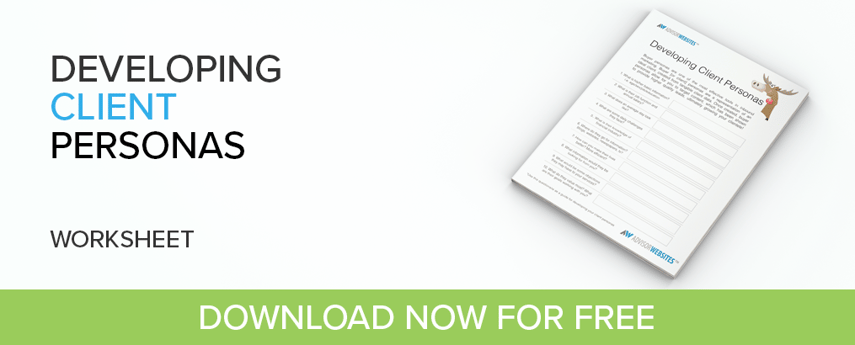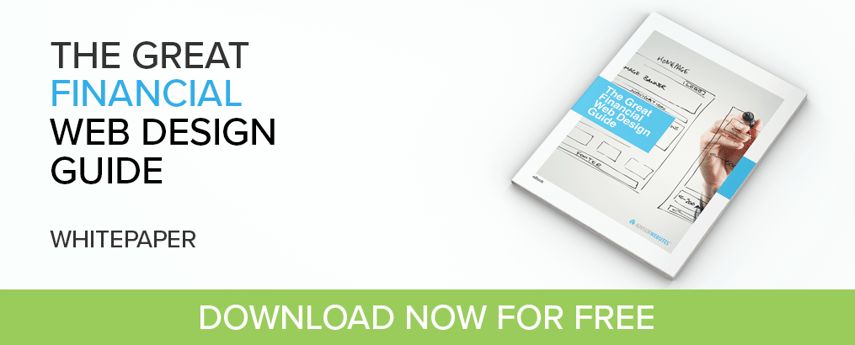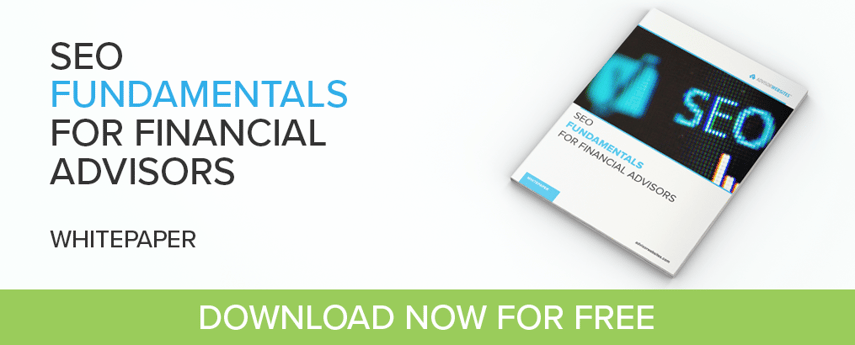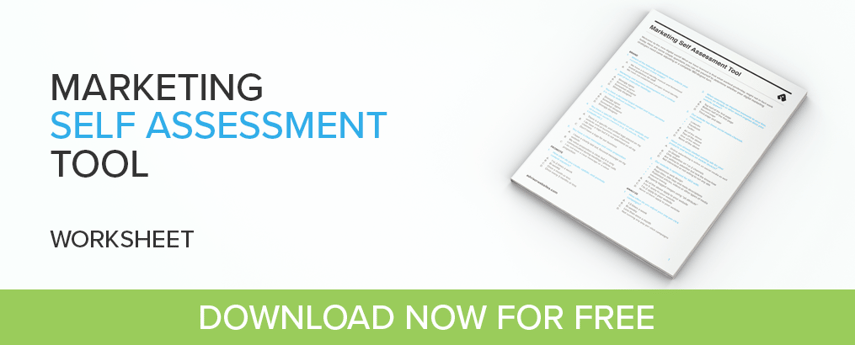Great marketing is not easy. But it is necessary to grow and expand. In the financial services industry where pretty much everything you're "allowed" to do is strictly regulated, achieving great marketing becomes even more of a challenge. A vast majority of financial advisors are not marketers by trade, so more often than not, they're not sure where to start.
We've put together this informative Marketing 101 article for financial advisors willing to up their marketing game. The resources and other articles linked here are designed to give you ideas and point you in the right direction.

Here's what you can expect to find on this page:
TABLE OF CONTENTS:
- Define “you”: Craft your message
- Define your audience: Buyer personas
- Boost your online presence: Get that website sorted out
- Become the expert: Create content
- Get out there: Social media
- Be visible: SEO
- Capture leads: Convert
- Nurture and warm your leads: Keep providing value
- Assess your efforts: Monitor yourself
DEFINE "YOU": CRAFT YOUR MESSAGE
Crafting your message is easier than you think it is. All you need to do is to answer a simple question until you're satisfied with what you find: "Why?". What's great about this question is it forces you to dig deeper. By discovering the details that you didn't even know were there, it makes your marketing more effective and paints a clearer picture about your practice.
Here's an example, say you own a business that sells sports/workout accessories:
"We sell sports/workout accessories. You should buy our products."
Why?
"Because when you exercise regularly, you get better at it and you'll want to exercise even more."
Why?
"Because when you exercise, you feel better and become healthier. When you feel better, your physical and emotional life will be in balance."
Why?
"Because when you feel better and your physical and emotional lives are in balance, you're happier."
Ah, there! Now you have something you can really work with.
You've laid out the groundwork. From here, tell people a bit about yourself in a way that they would feel compelled to connect with you. Don't make it a dull resume-like wall of text though, you want to appeal to their emotions so that you can get your message across.
Need a little help with writing the perfect advisor biography? Check out our article on writing the perfect advisor biography here. You can also download a template here:
DEFINE YOUR AUDIENCE: BUYER PERSONAS
What exactly is a buyer persona? Simply put, buyer personas are representations of who buyers are, what they are trying to achieve, what drives their behaviors, how they think, buy, and why they make the purchasing decisions they do - all based on research. We here at Advisor Websites even give names to the personas we create. (Yes, you're probably in one of these groups!) We've discussed buyer personas here if you'd like to learn more.
We don't just assign people randomly though. It's all based on who you are and your behavior; what pages you visited, where you bounced off, what your discussions with our employees look like (if any), and more. Here's a simplified version of the criteria we consider when working with buyer personas:
- Background : This is a broad category, and it could include education, interests, qualifications, designations, job title and even hobbies.
- Demographics: The usuals; gender, age, location, whether they own their home, etc.
- Identifiers: What type communication do they prefer? Email or phone? Are they active on social media? If yes, which platforms? Are they seen as a thought leader?
- Primary and secondary goals: What do these individuals want to get out of their career? Where do they see themselves in 5/10 years? How do they measure success?
- Challenges/pain points: This could include anything from the problems they face within their role, ranging from time-management to lack of knowledge in certain areas.
- Our solution: Where do we fit? What features or benefits of our product do they value? How are we going to help them overcome a challenge they might be having?
- Quote: Something that this person might say. It helps attach a personality to the persona we've crafted.
- Common objections: What kind of objections we should prepare for when we're talking to these individuals. Are they price-sensitive? Or do they have expectations we cannot meet?
This is a lot to process, and we're sorry we dropped this info-bomb just like that. But mastering your personas helps your efforts greatly, especially when it comes to crafting the right message for the right people. Here's a resource that will help you get started with creating your own personas:

BOOST YOUR ONLINE PRESENCE: GET THAT WEBSITE SORTED OUT
We won't spend a lot of time on discussing why you need a website -because it's 2017- but we'll share some interesting statistics from Iris to reinforce that need:
- Google processes over 40,000 search queries every second. Each day, there are over 3.5 billion searches which translates to 1.2 trillion searches per year. (Internet Live Stats, 2014)
- 89% of consumers conduct their product research using search engines. (PR Newsire, 2014)
- 72% of consumers trust online reviews as much as personal recommendations. (Search Engine Journal, 2014)
- Nearly two in three of mass affluent consumers take action after using social media to discover and consider financial products and services. (The DigitalFA, 2014)
- Two-thirds of millionaires surveyed said they would like to use electronic media with their advisors. (The DigitalFA, 2014)
- About 90 percent of mass affluent consumers use social media. Of that 90 percent, 44% engage with financial institutions on social media. (LinkedIn, 2013)
- Companies that increase blogging from 3-5 times a month to 6-8 times a month almost double their leads. Companies that blog only 1-2 times a month generate 70% more leads than those that don’t blog at all. (Hubspot, 2012)
- Inbound marketing costs 62% less per lead than traditional outbound marketing. (Groove Digital Marketing, 2013)
- Google says there are more searches on mobile than on desktop (Google, 2015)
- Customer testimonials have the highest effectiveness rating for content marketing at 89%. (Social Times, 2013)
On to what you need that website to include.

You need a modern website that provides visual depiction of target clients, copy that's relevant to your audience, more visual content (like videos!), and clear, transparent descriptions of the services you provide. Use keywords in your title tags to match to your geographical location and search terms for your service. Oh and obviously, your website must be responsive so that the viewers can have a good experience on their phones or tablets.
It doesn't end there though. There are many moving parts in a website. What calls-to-action will you have? What colors are you going to use? Will you have a blog (hint: you must)? Will you offer resources to download? How will these work in unison?
You'll need to answer a lot more questions, and it is a lot of work. But that work will pay off when people just don't want to leave your dashing website or they keep downloading your resources in exchange for contact information because you offer so much value! Think about seriously untapped markets, and engage with your client base. Simply put, having a website is of paramount importance. We've created a great article on online presence with our good friends at Finaeo about Read it here.
There are other key contributors to your online presence such as your blog and social media, but we'll get to those later. If you're confused and don't know what you should be expecting, take a look at this whitepaper:

BECOME THE EXPERT: CREATE CONTENT
Content marketing - what is it exactly? It's a form of inbound marketing, meaning that prospects come looking for you, not the other way around. In other words, you're trying to "earn" their attention with content. Speaking of which, have you read this article we published on content for financial advisors?
Content can come in many forms, from ebook and whitepapers to blog articles, videos and infographics. You should make sure that whatever content you're creating for you audience provides some value. Try addressing their challenges, their pain points and even if you cannot offer an immediate solution, make sure they understand that you "get it".
Pay attention to the quality of the content you create. The higher the quality, the higher its chances of converting a visitor. Now it doesn't have to be a 50-page ebook, but you'd better give readers more than just non-formatted words on a page. Make an effort in the language and the graphic design. The more diligent you are with your content, the higher the perceived value of it. Needless to stay, the more useful and valuable content you supply your potential customers with, the more willing they will be to convert to leads - and provide you with the contact information you need to process and follow up with.
GET OUT THERE: SOCIAL MEDIA
Social media is an excellent platform for creating engagement, both with the target audience and potential new customer groups - but also with existing customers. In today's digital world it is important for businesses to stay connected with their audience, and social media is an excellent tool to accomplish that. Engagement is not the only thing social media is good for though, platforms like Twitter, Facebook and LinkedIn also draw more traffic to your website. The simplest advice we can give you is to be active on the platforms where your audience hang out. If it's Twitter then you need to join and start tweeting! If it is LinkedIn, you need to create a corporate profile (i.e. company page) and start being active in groups. The same goes for Facebook. Share blog posts and other content on LinkedIn and Facebook, don't forget to comment on others' content. Go visit all the popular blogs you read and try to figure out what the authors are doing to maintain a large following. If you don't really follow any, here's a great list of blogs for financial advisor to follow.
We recently published a whitepaper on social media, and it includes several tactics you can use to grow your business online. Find it here:

Sharing your own content is crucial, but it's only when you share other people's content that you'll truly experience the reach of social media. Sharing content created by others will help build relationships with other businesses and individuals. In our industry, relationships go a long way, as we're sure you'd agree. When you start sharing posts from a blog you follow, it will not go unnoticed by the blogger. This increases the chance that they also share your content with their followers.
The important thing is to achieve the right balance. We'd say that 50/50 is a good place to start. Use 50% of your time on your own branding and content distribution, and 50% of the time to share other people's content and engage in conversations. Slowly but surely, you'll find that you see better traffic trickling in, ultimately turning into more leads -given that you can capture them.
An article we've written years ago is still relevant today: see why companies are shifting from old school methods to social media.
BE VISIBLE: SEO
To optimize the website is an extremely important part of inbound marketing. In order to achieve good online visibility, you need to know how your prospects want to interact with your brand. Armed with this knowledge you will be better able to create persuasive and educational content that solves the visitor's problems and challenges. Almost five billion searches are done every single day just on Google. Five billion! If you cannot optimize your site for search engines like Google and Bing, you'll miss a great opportunity to attract visitors to it.
Here's a tool for financial advisors wanting to get started with SEO:

That paragraph you just read used to summarize the most important aspect of SEO until recently. A couple months ago, Google released the Hummingbird update, and things changed a bit. The fundamentals still apply, but content relevancy has a lot more weight when determining your rankings now. For instance, if people keep bouncing off of a page on your site, Google will think it's not a helpful page and that'll affect your rankings negatively. Similarly, if visitors move from article to article on your blog and spend time reading them, Google will reward you for it.
CAPTURE LEADS: CONVERT
Now that you're getting some traffic to your site, the next step is to make sure you convert it to leads. To do this, you must obtain the visitor's contact information so that you can follow him/her later. Therefore, you must offer something valuable in exchange for their contact information. These are so-called premium content, that is, content pieces like e-books, checklists, webinars, video lessons, whitepapers, etc. When giving your visitors quality content that is in line with their interests and needs, you are increasing their chances to engaging and connecting with you. As you try to capture and move leads through your sales funnel, you should be paying attention to these two areas:
Calls-to-action:
A call-to-action (CTA) is a clickable item, link, button, or graphic added to a site to encourage visitors to perform an action. It could be anything from downloading an e-book to scheduling an appointment with you. With a CTA on every page of the site, visitors can convert whenever they feel like it. CTA buttons are especially effective when used on the popular pages of a webpage, to lead to more content or to encourage contact. We recommend that you have at least one CTA for each of your content pieces. A CTA button performs well at the bottom of blog posts, to provide access to e-books or other premium content. When visitors click on a CTA button, they will arrive at a landing page. More on that later.
Think through where in their journey the visitors are when they first lay eyes upon your CTA. Some of them may be further down than others as they enter the website, so you'd be in a better spot if you have premium content that is relevant to all phases of the said journey. Some content naturally leads to more information in the form of an e-book or a whitepaper, while other content could simply display a button that encourages to book an appointment.
Landing Pages:
What are landing pages, and what role do they have in inbound marketing? A landing page is a webpage created exclusively for converting visitors to leads - in other words, to encourage them to take another step in their journey towards becoming a client of yours. Most people stumble upon landing pages after clicking on a CTA button. On landing page, they're usually greeted with a form where they leave information in exchange for content or other offers (e.g. book an appointment, download an ebook, etc.). Good landing pages contribute to increased conversion. If the landing page is cluttered and the layout is sub-par, visitors will leave without converting. Check out this Hubspot article discussing the top performing landing pages to learn more. We at Advisor Websites also publish articles about conversion regularly. Take a look here to find out more.
NURTURE AND WARM YOUR LEADS: KEEP PROVIDING VALUE
Lead nurturing is a process that ideally converts leads to clients. The purpose is to "warm up" the lead with more content in a dialog from the moment he/she showed interest until it is appropriate for you or your team to contact them with an offer. This hubspot article here says 79% of marketing leads never convert into sales. Lack of lead nurturing is the common cause of this poor performance. A clear strategy for lead processing is therefore necessary to generate more better quality leads.
The first step in a successful dialogue is to fill the sales chain with leads that have high potential to become customers. When you have captured a lead, such as someone signing up for your email list, it most likely is not possible to turn them into clients right away. You must "warm" them up until they're ready. There are several methods for lead nurturing, but in this article we'll discuss the two major ones applicable for financial advisors. The first method is the use of marketing automation software, which ensures that lead nurturing happens automatically.
With a marketing automation system in place, you get the job done effectively with a dialogue. The system captures new leads and follows them up with 1: 1 communication using e-mail, from initial inquiry until they become clients of yours. Marketing automation software makes it easy to set up automated workflows. An automated workflow helps you develop (mature) leads until they are warm enough, by sending them targeted emails with custom content - based on their former digital behavior. This makes it worthwhile for you or your team to spend time on the lead.
You'll hear the occasional "email is dead", but it is still highly relevant as a marketing tool. Done correctly, this is the most targeted and cost-effective communication channel for your products and services. Remember to segment your email list, that is, divide it into different groups, much like the personas we discussed earlier. This allows you to tailor your newsletter to the recipient group so that you send them content that is useful and relevant to them. This tactic provides a much higher conversion rate. When you segment your lists, you also get the opportunity to test the same message on different segments in your contact database, allowing you to tweak your tactics as you keep nurturing the leads.
As we've already been through, targeted e-mails with personalized content are a good way to process the leads until they are ready for sale/contract. An automated workflow makes the process simple and efficient. Typical email campaigns may include sending out a monthly newsletter, targeted emails that promote your premium content, or notifications about new posts on your blog, or emails in automated workflows that push the leads further down your funnel. Professional email marketing software, such as HubSpot, integrates email with all parts of your digital marketing. This allows you to automate the follow-up of leads. Anyone who has downloaded an ebook may be offered another ebook after a certain period of time.
See this article here to discover how you as a financial advisor should be following up on leads.
ASSESS YOUR EFFORTS: MONITOR YOURSELF
Even satisfied customers need to be processed and cared for so that they do not cease to feel appreciated and seen by your organization. Therefore, you must continue to engage your customers even after they have purchased your products or services. In today's consumer activity, it's crucial that you develop strong and lasting relationships with your customers and make sure they serve as ambassadors for your business. Inbound marketing positions your business as a resource for your customers, get them excited about your offerings and makes them return for more. Emails and newsletters that go out to your customers, with special offers, discounts, exclusive premium content, etc., are a great way to keep your customers excited, so that they return for more.
Now that you have a good understanding on how to manage your marketing efforts as a financial advisor, next step is to create unexpected and valuable moments that leave lasting impressions on each and every client. Happy customers can be worth 10 times the value of their original purchase. Think referrals! Happy clients are more likely to actively invest time and effort in convincing others to buy. If you are in a position where your current client base is actively talking about you to their friends and family or even commenting about you on social media, your organization will enjoy a more stable revenue stream and not just depend on new customers.
In this day and age, consumers are in the driver's seat and no longer accept the -somewhat- annoying and impersonal old marketing methods. You have to get them to seek you out, instead of wasting a ton of money to "buy" their attention and hope for the best. And then you must excite them!
What makes inbound marketing a game changer in the way businesses are marketing is that the methodology covers the entire journey from stranger to customer - with all the most effective measures and tools along each and every contact point. With quality content, you attract the customers that are right for your business. Once you've given them the experience they expect and deserve, convert them to loyal clients who will gladly talk you up to their family and friends.
As a final note, you have to stay up-to-date with the recent developments in the marketing world if you want to stay relevant. Because if you don't, someone else will grab them right under your nose.
Keep looking into what the best practices in the industry look like, and compare your efforts to those who are "nailing it". If you're not sure where to start, we have a handy little self-assessment sheet you can download access here:








.png)

